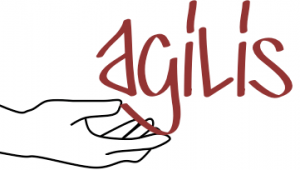Christine Azevedo, the road to autonomy
Date:
Changed on 05/01/2021
At first, there's a hesitation. What to choose between life sciences, medicine, and a career as an engineer? Christine Azevedo decided to go to IUSPIM (now Polytech), in Marseille, a general engineering school, with a focus on automatic colouring, the science of dynamic systems. In 1997, she did her end-of-studies internship in a SME in charge of oil field logistics. She was recruited there as a quality manager. But after a short year, the conclusion was clear: the job did not suit her. "I hadn't finished wanting to learn and I was too curious to remain locked into something that I found repetitive. »
Back to school for a master's degree in automation and robotics at the Institut national polytechnique (INP) in Grenoble, obtained in 1999. For her research internship, she joins the BIP team, led by Bernard Espiau, who is working on the beginnings of bipedal robots. At the time, the field had just taken a turn: Honda brought out the very first robot capable of walking and climbing stairs.
Christine Azevedo is staying with Bernard Espiau for a thesis on posture and gait control in humanoid robotics.
Right from the start, his interest in automatic is in motion control. How do you artificially reproduce, in a two-legged robot, the balanced human posture and allow walking? Christine Azevedo gives an overview of what neurosciences know about human motor control.
In her final year of thesis, she meets David Guiraud, who is participating in the European Stand Up And Walk project: restoring walking in people suffering from paraplegia by implanting an electrical stimulator in the pelvis connected to electrodes distributed over the leg muscles. This is his first encounter with functional electrical stimulation. And a revelation. I said to myself, "Yes, of course, that's what I want to do! Everything I do in robotics, everything I'm interested in, everything I like, I want to apply it to a handicap problem. »
At that time, David Guiraud was starting to create the Demar team (Deambulation and Artificial Movement) at Inria in Montpellier and Christine Azevedo wanted to be part of it. To build up her knowledge of human physiology, she is doing a postdoc on posture and locomotion management in humans, in Marseille. She stayed there for a year, at the end of which she took the entrance exam for Inria. Although her application was well received, she lacked international experience. It will be Denmark, at the Centre for Sensorimotor Interaction at the University of Aalborg. There she is training in functional electrical stimulation with leading names in the field of neuroprostheses, the interfaces with the nervous system that activate the contraction of muscles in paralysed people.
In 2004, Christine Azevedo is recruited in the Demar team. She launches projects on sit-to-stand transfer assistance, walking assistance for people with hemiplegia or Parkinson's disease and integrates herself into the existing work with her contribution as an automation technician. Because here, it's all about teamwork.
In addition to the multidisciplinary nature of the research skills mobilised (computer science, microelectronics, neuroscience, etc.), interactions with doctors and industry are fundamental. "We're trying to develop solutions that may one day become a reality for patients, so the clinical and industrial transfer stage is very important. Right up to the patient, who becomes a full-fledged member of the team, whom he feeds on his feedback. "In this field, the human factor is first, everything else has to adapt. »
In 2016, the question of the future of Demar is raised. The team has made a big effort in technological development (stimulators, software ...), which a research team is not designed to carry and develop. The decision is taken to create a startup, Neurinnov , to ensure technology transfer and heavy development related to the research work of the team. David Guiraud and his colleague David Andreu set about it. Christine Azevedo is in charge of the academic and scientific research part, by creating, following Demar, the Camin team (Artificial Control of Intuitive Movements and Neuroprotheses), common to Inria and the Montpellier Laboratory of Computer Science, Robotics and Microelectronics (LIRMM). The first official collaboration of the two structures is Agilis (see box below), a European project that aims, in the long term, to restore hand and wrist movements.
By getting involved in this field, Christine Azevedo wanted to participate in this effort to bring science and technology to people who can benefit directly from it. While she is passionate about her work, she does not yet consider herself to have reached her goal, as her projects are still at the research stage. Her Holy Grail? That her work results in a concrete solution that can be used on a daily basis to improve the quality of life of people with disabilities.

The Agilis project will test, on volunteers suffering from tetraplegia, the stimulation of different nerve bundles involved in the flexion and extension of the hand and wrist, through the use of two implanted multi-contact electrodes. A previous project validated the selectivity of the stimulation and the triggering of different types of movements in anesthetized patients during a tendon transfer operation. The aim of the Agilis project is to prove the concept of the functionality of the proposed system, including the recovery of functional extension and flexion, allowing the grasping of different types of objects.

In 2016, the Camin project team took part in the first Cybathlon, an international competition organised by ETH Zurich for competitors with disabilities who are equipped with bionic assistive technologies. Christine Azevedo, her colleagues and their paraplegic pilot competed in the functional electrical stimulation bike race category.
The FreeWheels team is once again participating with a new pilot in the Cybathlon, which will take place this year in Kloten, Switzerland, at the start of the new school year.